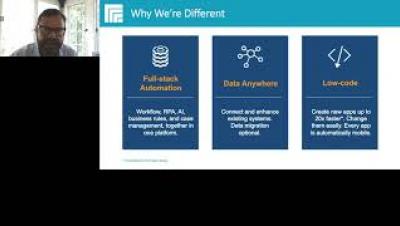Systems | Development | Analytics | API | Testing
August 2020
Optimising AML and KYC Processes Across the Enterprise With Low-code Automation
Appian 20.3 Product Announcement Webinar
Recalibrating Enterprise Risk Management in Response to Crisis
COVID-19 and its impact have demonstrated that change can be rapid, disruptive, and non-negotiable. This is especially relevant to enterprise risk management, where the challenge can be summed up in one word: recalibration. Many financial institutions have been investing in model-driven analysis and data-anchored approaches. We know that the models themselves must adapt as situations change. But what about the processes and policy governance that surround these models?
Why Global Life Sciences Leaders See Automation as a Top Priority
For life sciences organizations today, COVID-19 and an increasingly complex regulatory landscape are spurring an urgent need to launch new applications–fast. Yet a number of challenges stand in the way, including complex business processes, concerns about data security and integrity, and even just knowing where to begin on the right tech solution to put in place.
Gartner Post-Pandemic Government Digital Transformation Insights
The COVID-19 pandemic has forced government organizations to reassess their strategies, plans, and aspirations for digital transformation. Despite this uncertainty, IT leaders must quickly identify and act on strategies and plans that lead to positive outcomes. In many cases, governments will expand the role of digital technologies in service and program delivery.
Intelligent Document Processing for Innovation in Life Sciences Regulations
In the wake of the COVID-19 pandemic, many life sciences organizations are seeking efficiency and control over the regulatory process more than ever before. There is an increased urgency for speed, accuracy, and simplified processes in the Regulatory Information Management (RIM) space, and to prioritize projects that will quickly deliver the most patient value.
Government Acquisition Requirements Management Solution
DoD Customers Securely Access DODIN Hosted Appian Applications From Their Mobile Devices
Appian, in cooperation with Defense Information Systems Agency (DISA) engineers and the United States Marine Corps, now supports mobile access to Appian applications within the Department of Defense Information Network (DODIN). This enables access to the Appian platform, as well as Appian applications and solutions deployed in a DODIN Cloud-approved enclave (AWS, GovCloud, Azure, etc.) via any DOD-approved iOS or Android mobile device.






